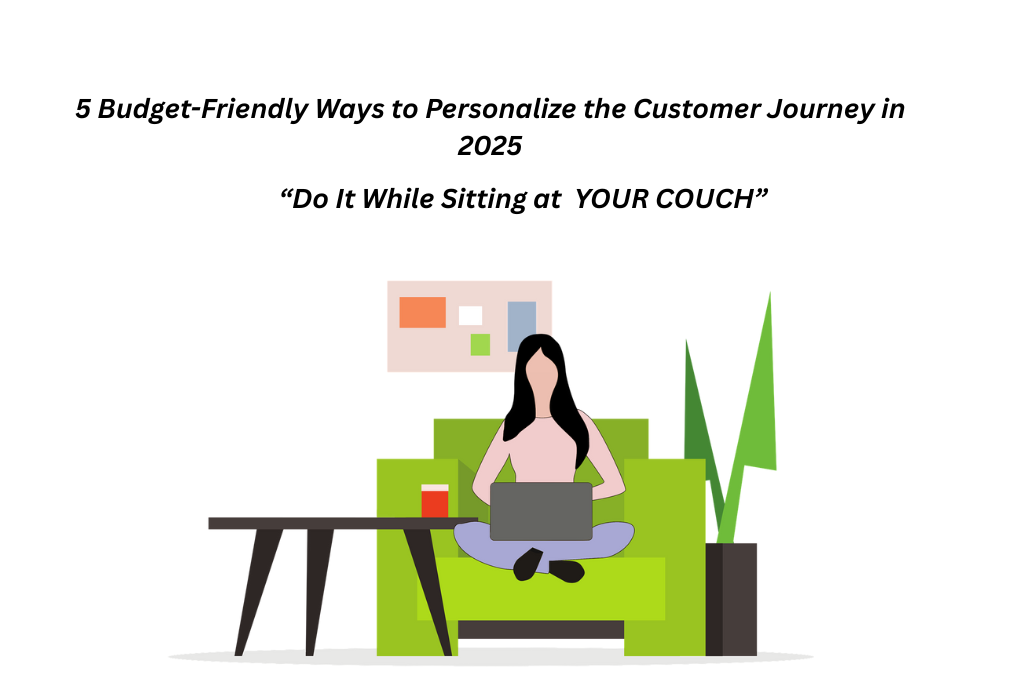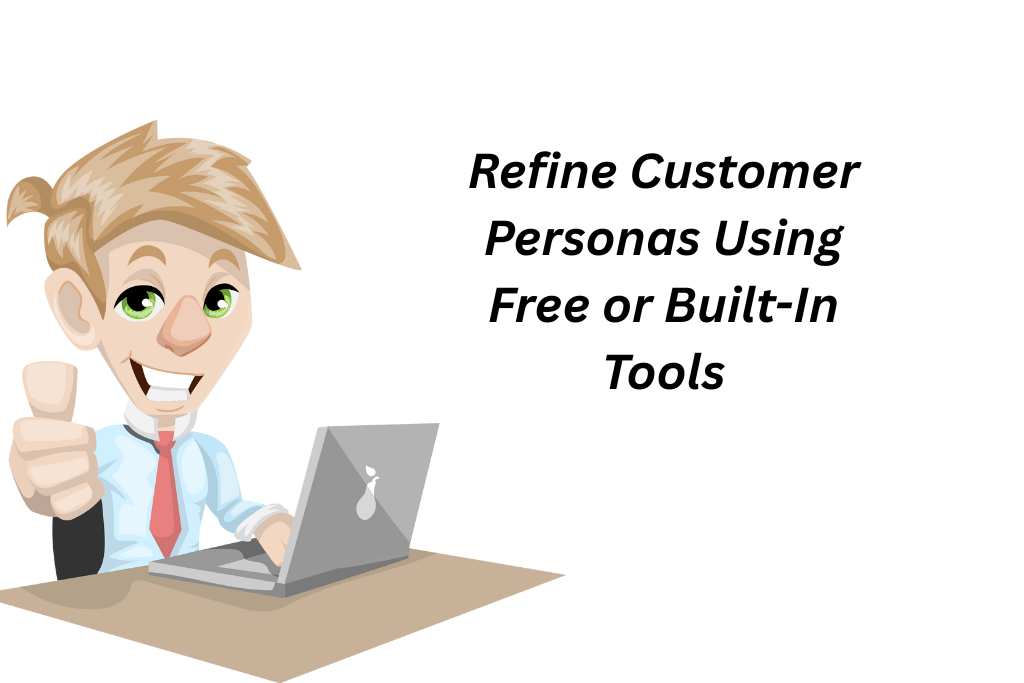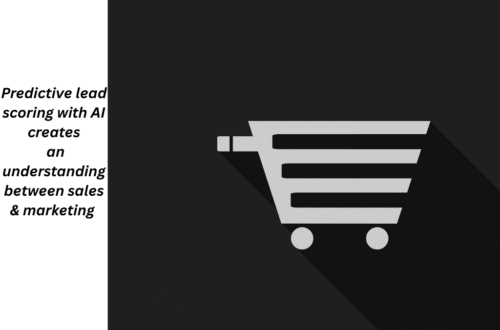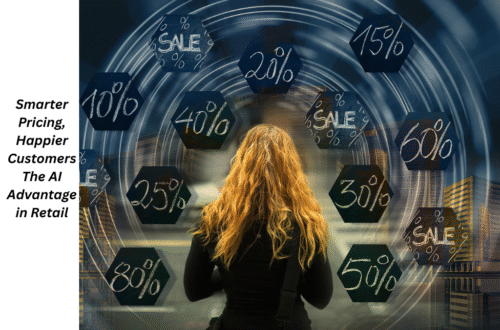
5 Budget-Friendly Ways of Personalizing the Customer Journey That You Should Try in 2025
Since SMEs and SMBs are packed with limited budgets, they must focus on the pocket-friendly and promising ways of personalizing the customer journey, to save their funds for other expenses. Personalizing the customer journey is about creating and delivering services and product recommendations. Each deliverance is based on customers‘ unique preferences and interactions with brands. The purpose of this approach is to enhance customer experience, making it more relevant and enjoyable for customers.
Customer journey is about the different steps that an individual takes to become your customer, and without customer journey, even your marketing funnel could not exist. A customer journey map tells how customers discover your brand, interact with it, and whether or not they will make a repeat purchase. All customers’ journeys are not the same, but you can use these maps to update your website and marketing efforts.
Common Terms, stages, and Core elements of Customer Journey
Here are some terms used in personalizing the customer journey
- Current-State Map that identifies issues and refers to interactions, emotions, and pain points.
- Future-State Map that envisions the improvement of the customer journey after changes and aligns with the team’s goal and product strategy.
- A day in the life map refers to how the product fits into a user’s day
- Service Blueprint maps user actions and internal systems to improve backend processes and team coordination.
The key stages of a user journey
- Activation (First-time value experience)
- Adoption (Regular use begins)
- Renewal (User chooses to continue)
- Expansion (Upgrades or adds products)
- Loyalty (Keeps using the product)
- Referral (Recommends to others)
Core Elements of a Journey Map
- User Persona
- Stages & Touchpoints
- User Actions & Emotions
- Pain Points & Opportunities

Integrate AI and Customer Data Without Breaking the Bank
For personalizing the custom journey, you will need to cover insights and automate simple personalization, such as email segmentation and product recommendations. To do that, focus on using cost-effective AI tools and analytics platforms. AI tools will show you the content and product segmentation based on customer preferences and browsing history.
The personalization makes customers feel understood, and they will keep coming back. AI also helps with customer support through chatbots that are available 24/7, give quick answers, and can handle many questions at once. For more complex issues, AI passes the customer to a human with all the details, making the help process smooth.
Personalize Every Touchpoint with a Human-Digital Blend
The customer journey enriched with insights and real-time personalization becomes seamless in offering quick help and stronger connections. Personalizing every touchpoint with the help of AI does not mean leaving everything to the tools. Instead, you need to combine the automated responses with empathetic human messaging to build authentic connections with your audience. Since the customer journey comprises several key parts, you design this experience the way the customer likes.
With tools like QR codes, smart mirrors, and apps, brands can keep customers connected before, during, and after a purchase. If your company masters these journeys, it will earn more loyalty and stay ahead of the competition.
Refine Customer Personas Using Free or Built-In Tools
For creating a user journey map, first define your goals and user personas as different users and different experiences. Use free CRM features, survey tools, and social listening to personalize content.
Next, identify all major touchpoints across the user’s interaction with the product.
Once done, do both analytical and qualitative research on your users’ pain points. You can use surveys or interviews to understand the user issues. Collect data and then visualize the journey using templates in tools like Figma or Canva.
In this visualization, you can include mapping out stages, touchpoints, actions, emotions, and challenges.
Once created, validate your map with real user behavior and small experiments, like prototype testing. Finally, keep the map updated regularly to reflect changes in user needs, feedback, and product updates.
Here’s a step-by-step guideline for you
- Set Goals & Define Personas. This step involves clarifying what you want to improve and build profiles of typical users.
- Listing Key Touchpoints. Identify where users interact with your product (onboarding, upsells, etc.).
- Discover Pain Points. It involves using analytics, surveys, and interviews to find where users struggle.
- Visualize the Journey. In this step, use tools like Canva or Figma to plot stages, actions, emotions, and pain points.
- Validate with Feedback. Here you will compare the map with real user behavior and run small tests to confirm assumptions.
- Update regularly and continuously keep refining the map based on new data and evolving user needs.
Create a Seamless Experience Across Channels You Already Use
To create a seamless experience across channels, you need to ensure consistency. This should be in your messaging, tone, and personalization across your website, email, and social media platforms. To develop a successful personalization strategy across multiple channels, you need to:
- Craft tailored strategies
- Practice cross-functional collaboration
- Focus on seamless marketing, support team work together, facilitate data sharing, and communication
To succeed in personalizing the customer journey, focus on consistent storytelling and emotional connection. Also, remember that technology is the backbone of a connected customer experience. CRM systems provide a 360-degree view of customer interactions. On the other hand, AI and automation help predict needs, personalize experiences, and streamline workflows.
Make Trust and Transparency Part of Your Personalization
Last but not least, simple but strong cybersecurity and privacy practices should be incorporated to build trust. Using transparent data can itself be a form of personalization. And it’s not just older customers, Millennials, and Gen Z care just as much about digital privacy.
The good news? Being open and honest builds trust. Sprout Social found that nearly 90% of people would give a brand a second chance after a poor experience if that brand has a history of being transparent. When customers understand and agree with your data practices, they’re more likely to opt in and that opens the door to better service.
Conclusion
When your data policies are open and respectful, customers feel safe and your brand earns their trust. Challenges like fragmented systems, the pressure to innovate, and limited resources can hinder progress. However, using advanced technology, clear processes, and smart investments in high-impact areas can help overcome these barriers. And then you can ultimately deliver a seamless customer experience is an ongoing commitment.







One Comment
Pingback: